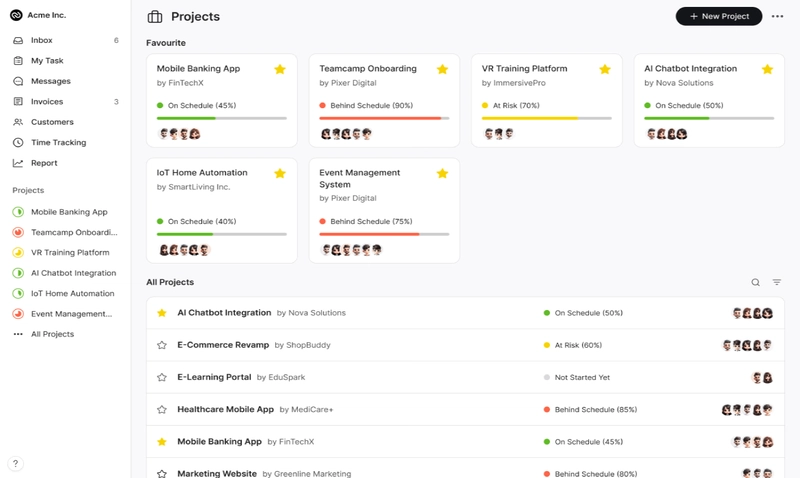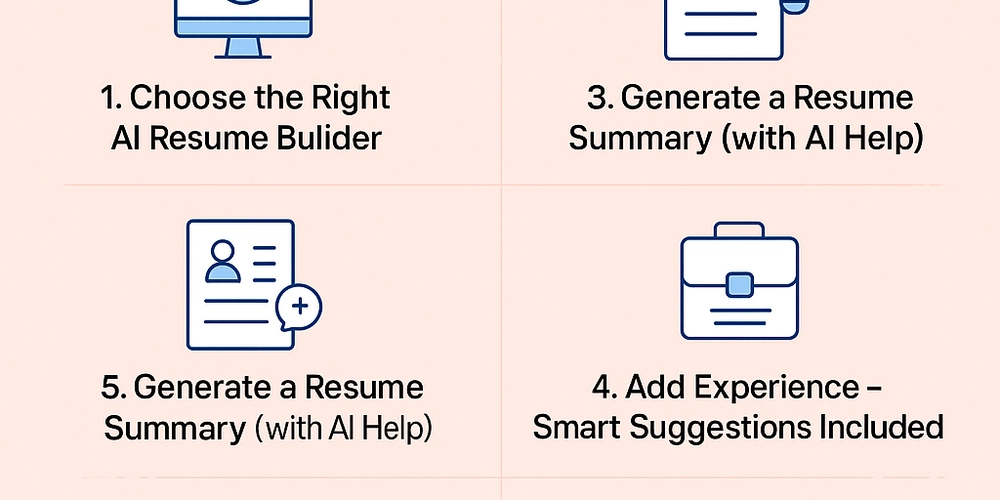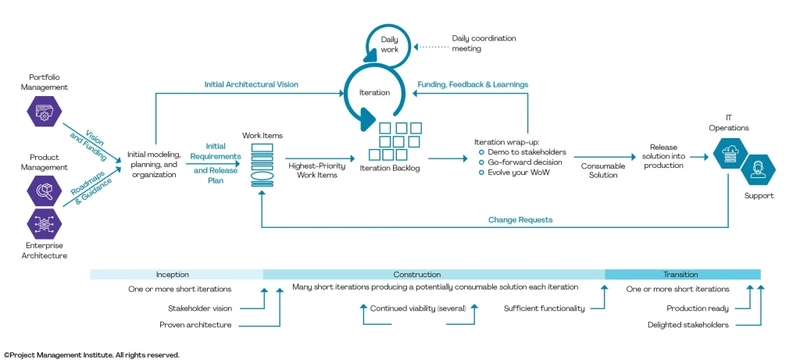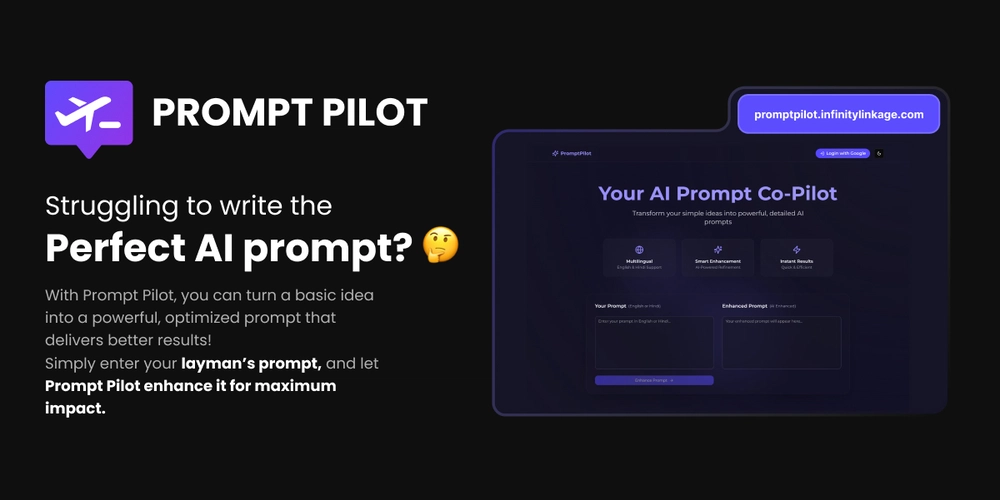The Evolution of Agile: Adapting Frameworks for Global, Hybrid Teams
Introduction Agile methodologies have transformed software development over the past two decades. From the early days of Scrum and Kanban to today’s hybrid frameworks tailored for global, hybrid teams, Agile has continuously evolved to meet the changing needs of developers and organizations. But how can tech teams adapt Agile practices to thrive in a world dominated by remote work and cross-border collaboration? Let’s explore the journey of Agile, its transformation, and practical strategies for modern teams. Do Agile Practice with Teamcamp The Origins of Agile: A Game-Changer in Software Development Agile was born out of necessity. In the late 1990s and early 2000s, software development faced a significant challenge: traditional waterfall methodologies were rigid and often resulted in delayed projects or mismatched customer expectations. Developers needed a more flexible approach. In 2001, a group of software pioneers introduced the Agile Manifesto, emphasizing values such as collaboration, adaptability, and delivering working software over exhaustive documentation. This manifesto laid the foundation for popular frameworks like Scrum, Kanban, and Extreme Programming (XP). Why Agile Gained Traction Agile empowered teams to: Respond to change rather than sticking to rigid plans. Prioritize customer satisfaction through iterative delivery. Foster collaboration between developers and stakeholders. By focusing on adaptability and collaboration, Agile quickly became a cornerstone of modern software development practices. Why Agile Needed to Evolve While Agile revolutionized development processes, it wasn’t immune to challenges. As organizations grew larger and teams became distributed across geographies, traditional Agile frameworks struggled to scale effectively. The rise of hybrid work models further complicated workflows—teams now operate across time zones, cultures, and varying levels of Agile maturity. Key Challenges That Prompted Evolution Global Collaboration: Distributed teams needed tools and processes for seamless communication. Hybrid Work Models: Balancing in-office and remote work required flexible workflows. Scaling Agile: Large organizations needed frameworks that applied Agile principles across multiple teams without losing efficiency. These challenges led to the emergence of Hybrid Agile Frameworks, which blend traditional project management techniques with Agile principles. Hybrid Agile Frameworks: The Future of Collaboration Hybrid Agile frameworks combine the adaptability of Agile with the structure of traditional methodologies. They are particularly effective for global teams that need transparent processes while maintaining flexibility. Benefits of Hybrid Agile Frameworks Flexibility Meets Structure: Teams can adapt workflows based on project needs while maintaining clear milestones. Improved Communication: Hybrid frameworks encourage transparency across distributed teams. Scalable Practices: These frameworks work well for large organizations with diverse team structures. Customizable Workflows: Teams can tailor processes to suit their unique challenges. For example, a hybrid team might use Scrum sprints for iterative development while incorporating Gantt charts from traditional project management to track long-term goals. Tools That Empower Global Teams Adapting Agile frameworks requires more than process changes—it demands tools that enhance collaboration and productivity. One standout solution is Teamcamp, an all-in-one project management platform designed specifically for modern tech teams. How Teamcamp Enhances Developer Productivity Teamcamp simplifies project management by providing developers with everything they need in one place: Centralized Task Management: Organize tasks using Kanban boards or lists tailored to workflows. Streamlined Collaboration: Built-in communication tools reduce reliance on external apps like Slack or email. Time Tracking Without Micromanagement: Developers can log hours voluntarily, fostering trust while providing insights into productivity trends. Progress Visualization: Real-time dashboards help teams monitor progress and identify bottlenecks early. By integrating Teamcamp into their workflows, global teams can reduce administrative overhead and focus on delivering high-quality software faster. Do Agile Practice with Teamcamp Practical Tips for Adapting Agile in Hybrid Teams Successfully implementing modern Agile practices requires thoughtful planning. Here are actionable tips for developers and tech managers: 1. Embrace Asynchronous Communication Global teams often work across different time zones. Use tools like Teamcamp’s discussion boards or asynchronous messaging features to ensure smooth communication without disrupting workflows. 2. Automat

Introduction
Agile methodologies have transformed software development over the past two decades. From the early days of Scrum and Kanban to today’s hybrid frameworks tailored for global, hybrid teams, Agile has continuously evolved to meet the changing needs of developers and organizations.
But how can tech teams adapt Agile practices to thrive in a world dominated by remote work and cross-border collaboration? Let’s explore the journey of Agile, its transformation, and practical strategies for modern teams.
Do Agile Practice with Teamcamp
The Origins of Agile: A Game-Changer in Software Development
Agile was born out of necessity. In the late 1990s and early 2000s, software development faced a significant challenge: traditional waterfall methodologies were rigid and often resulted in delayed projects or mismatched customer expectations. Developers needed a more flexible approach.
In 2001, a group of software pioneers introduced the Agile Manifesto, emphasizing values such as collaboration, adaptability, and delivering working software over exhaustive documentation. This manifesto laid the foundation for popular frameworks like Scrum, Kanban, and Extreme Programming (XP).
Why Agile Gained Traction
Agile empowered teams to:
- Respond to change rather than sticking to rigid plans.
- Prioritize customer satisfaction through iterative delivery.
- Foster collaboration between developers and stakeholders.
By focusing on adaptability and collaboration, Agile quickly became a cornerstone of modern software development practices.
Why Agile Needed to Evolve
While Agile revolutionized development processes, it wasn’t immune to challenges. As organizations grew larger and teams became distributed across geographies, traditional Agile frameworks struggled to scale effectively. The rise of hybrid work models further complicated workflows—teams now operate across time zones, cultures, and varying levels of Agile maturity.
Key Challenges That Prompted Evolution
- Global Collaboration: Distributed teams needed tools and processes for seamless communication.
- Hybrid Work Models: Balancing in-office and remote work required flexible workflows.
- Scaling Agile: Large organizations needed frameworks that applied Agile principles across multiple teams without losing efficiency.
These challenges led to the emergence of Hybrid Agile Frameworks, which blend traditional project management techniques with Agile principles.
Hybrid Agile Frameworks: The Future of Collaboration
Hybrid Agile frameworks combine the adaptability of Agile with the structure of traditional methodologies. They are particularly effective for global teams that need transparent processes while maintaining flexibility.
Benefits of Hybrid Agile Frameworks
- Flexibility Meets Structure: Teams can adapt workflows based on project needs while maintaining clear milestones.
- Improved Communication: Hybrid frameworks encourage transparency across distributed teams.
- Scalable Practices: These frameworks work well for large organizations with diverse team structures.
- Customizable Workflows: Teams can tailor processes to suit their unique challenges.
For example, a hybrid team might use Scrum sprints for iterative development while incorporating Gantt charts from traditional project management to track long-term goals.
Tools That Empower Global Teams
Adapting Agile frameworks requires more than process changes—it demands tools that enhance collaboration and productivity. One standout solution is Teamcamp, an all-in-one project management platform designed specifically for modern tech teams.
How Teamcamp Enhances Developer Productivity

Teamcamp simplifies project management by providing developers with everything they need in one place:
- Centralized Task Management: Organize tasks using Kanban boards or lists tailored to workflows.
- Streamlined Collaboration: Built-in communication tools reduce reliance on external apps like Slack or email.
- Time Tracking Without Micromanagement: Developers can log hours voluntarily, fostering trust while providing insights into productivity trends.
- Progress Visualization: Real-time dashboards help teams monitor progress and identify bottlenecks early.
By integrating Teamcamp into their workflows, global teams can reduce administrative overhead and focus on delivering high-quality software faster.
Do Agile Practice with Teamcamp
Practical Tips for Adapting Agile in Hybrid Teams
Successfully implementing modern Agile practices requires thoughtful planning. Here are actionable tips for developers and tech managers:
1. Embrace Asynchronous Communication
Global teams often work across different time zones. Use tools like Teamcamp’s discussion boards or asynchronous messaging features to ensure smooth communication without disrupting workflows.
2. Automate Repetitive Tasks
Automation tools can save developers valuable time:
- Set up automated testing pipelines.
- Use pre-commit hooks to enforce code quality standards.
- Implement CI/CD (Continuous Integration/Continuous Deployment) workflows.
3. Prioritize Focus Time
Encourage developers to block uninterrupted periods for coding or problem-solving:
- Use time-blocking techniques during sprints.
- Minimize unnecessary meetings by setting clear agendas upfront.
4. Regular Retrospectives
Hold reflection sessions after every sprint or project milestone to evaluate progress and improvements:
- Discuss what worked well and what didn’t.
- Identify areas where processes can be improved.
- Celebrate team successes to boost morale.
5. Leverage Visual Tools
Visualizing progress helps teams stay aligned:
- Use Kanban boards in Teamcamp to track tasks.
- Share burndown charts during sprint reviews to monitor completion rates.
Real-Life Success Stories
Many organizations have successfully adapted modern Agile practices with tools like Teamcamp:
Case Study: A Distributed Development Team
A mid-sized software company with developers across three continents struggled with communication gaps and missed deadlines. After adopting Teamcamp’s centralized platform and hybrid workflows:
- Task clarity improved by 50%.
- Sprint completion rates increased by 30%.
- Developers reported higher satisfaction due to reduced micromanagement.
This example highlights how combining flexible frameworks with powerful tools can transform team productivity.
Trends Shaping the Future of Agile
As technology advances, several emerging trends are set to redefine the future of Agile methodologies:
AI-Powered Project Management
Platforms like Teamcamp increasingly adopt AI-powered functionalities to automate task prioritization, predict project risks, and provide actionable insights.
Focus on Developer Well-being
Modern frameworks emphasize reducing burnout by balancing workloads and encouraging healthy work habits.
Asynchronous Workflows
With hybrid teams becoming standard practice, asynchronous collaboration will become essential in ensuring productivity across time zones.
Conclusion: Adapting Agile for Modern Teams
The evolution of Agile reflects its ability to adapt to changing team dynamics and organizational needs. For global hybrid teams, embracing hybrid frameworks combined with tools like Teamcamp can unlock new levels of productivity while fostering collaboration across borders.
Are you ready to take your team’s productivity to the next level? Explore how Teamcamp can streamline your workflows, reduce complexity, and empower developers to focus on what they do best—building great software. Start your free trial today!




























![[Webinar] AI Is Already Inside Your SaaS Stack — Learn How to Prevent the Next Silent Breach](https://blogger.googleusercontent.com/img/b/R29vZ2xl/AVvXsEiOWn65wd33dg2uO99NrtKbpYLfcepwOLidQDMls0HXKlA91k6HURluRA4WXgJRAZldEe1VReMQZyyYt1PgnoAn5JPpILsWlXIzmrBSs_TBoyPwO7hZrWouBg2-O3mdeoeSGY-l9_bsZB7vbpKjTSvG93zNytjxgTaMPqo9iq9Z5pGa05CJOs9uXpwHFT4/s1600/ai-cyber.jpg?#)













































































































































![[The AI Show Episode 144]: ChatGPT’s New Memory, Shopify CEO’s Leaked “AI First” Memo, Google Cloud Next Releases, o3 and o4-mini Coming Soon & Llama 4’s Rocky Launch](https://www.marketingaiinstitute.com/hubfs/ep%20144%20cover.png)




































































































































































































![Rogue Company Elite tier list of best characters [April 2025]](https://media.pocketgamer.com/artwork/na-33136-1657102075/rogue-company-ios-android-tier-cover.jpg?#)








































































_Andreas_Prott_Alamy.jpg?width=1280&auto=webp&quality=80&disable=upscale#)




























































































![What’s new in Android’s April 2025 Google System Updates [U: 4/18]](https://i0.wp.com/9to5google.com/wp-content/uploads/sites/4/2025/01/google-play-services-3.jpg?resize=1200%2C628&quality=82&strip=all&ssl=1)










![Apple Watch Series 10 Back On Sale for $299! [Lowest Price Ever]](https://www.iclarified.com/images/news/96657/96657/96657-640.jpg)
![EU Postpones Apple App Store Fines Amid Tariff Negotiations [Report]](https://www.iclarified.com/images/news/97068/97068/97068-640.jpg)
![Apple Slips to Fifth in China's Smartphone Market with 9% Decline [Report]](https://www.iclarified.com/images/news/97065/97065/97065-640.jpg)






































































































































